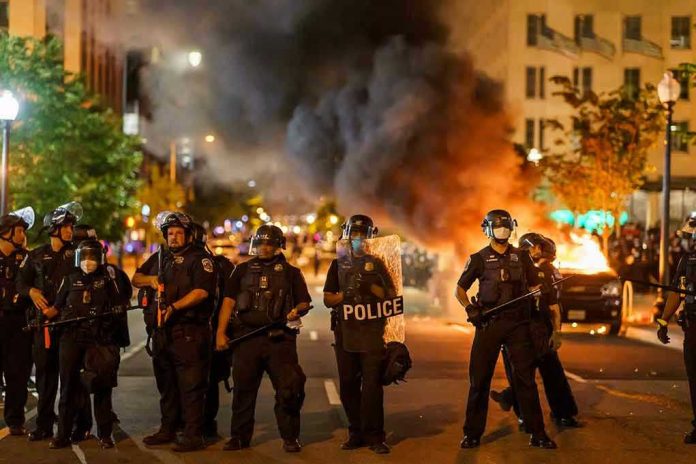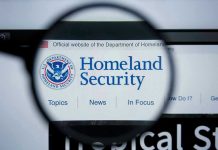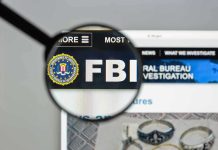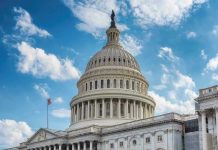
When a high-speed border patrol pursuit in Chicago erupted into chaos, tear gas blanketed protesters and two arrests sent shockwaves through a city already wary of federal crackdowns—raising urgent questions about the balance between security and civil liberties.
Story Highlights
- Border Patrol agents initiated a car chase that escalated into a public confrontation on Chicago streets.
- Dozens of protesters were caught in the crossfire, exposed to tear gas deployed by federal agents.
- Two individuals were arrested as part of the incident, fueling debate over law enforcement tactics.
- The event took place amid the Trump administration’s broader efforts to clamp down on urban crime.
Border Patrol Pursuit Shatters Quiet in Chicago Neighborhood
Border Patrol agents pursuing a suspect shattered the quiet of a Chicago neighborhood, drawing the attention of local residents and activists. The chase, part of the Trump administration’s ongoing campaign to combat urban crime, ended abruptly when agents intercepted the vehicle, causing a stir that quickly spilled into the streets. The incident unfolded against a backdrop of heightened tensions as federal agencies expanded their presence in cities known for robust protest movements.
Protesters, already gathered nearby to voice concerns about federal law enforcement actions, found themselves suddenly embroiled in an escalating conflict. As agents closed in on their target, the crowd swelled, their chants for accountability growing louder. The confrontation intensified, with both sides unwilling to back down—an atmosphere charged with anxiety, and the sense that the city’s familiar boundaries between law enforcement and civil society were dissolving before their eyes.
Tear Gas Deployment Sparks Public Outcry
In the aftermath of the chase, Border Patrol agents deployed tear gas to disperse the crowd—a decision that sent dozens of protesters scrambling for safety and left many questioning the necessity and proportionality of the response. Tear gas, a chemical agent banned in warfare but still used for crowd control domestically, permeated the air, leaving behind stinging eyes and haunting memories. As images of the scene circulated, the use of such force reignited longstanding debates about the militarization of police and federal agencies in American cities.
Federal authorities justified the measure as a necessary response to maintain order and protect officers. Critics, however, argued that such tactics risked escalating tensions, undermining the very public safety they purported to uphold. The incident quickly joined a growing list of confrontations in which law enforcement’s approach to civil unrest has come under scrutiny—fueling calls for greater oversight and accountability at both local and national levels.
Arrests Intensify Debate on Law Enforcement Tactics
Two arrests followed the deployment of tear gas, with authorities citing charges related to obstruction and disorderly conduct. The identities of those detained became rallying points for activists, who argued that aggressive policing disproportionately targets protesters and stifles dissent. Community leaders called for transparency in the investigation, demanding that federal agents disclose the rationale behind their actions and the criteria used to justify such force.
The Trump administration’s crackdown on crime, which has included the deployment of federal agents to cities like Chicago, Portland, and others, remains a contentious issue. Supporters claim it is a necessary step to combat rising urban violence, while critics warn that it sets a dangerous precedent for federal intervention in local affairs. The arrests in Chicago added fresh urgency to the debate, highlighting the need for clear guidelines and robust safeguards to prevent abuses of power.
Sources:
Video shows moment feds chased and crashed into vehicle, sparking standoff on Southeast Side















